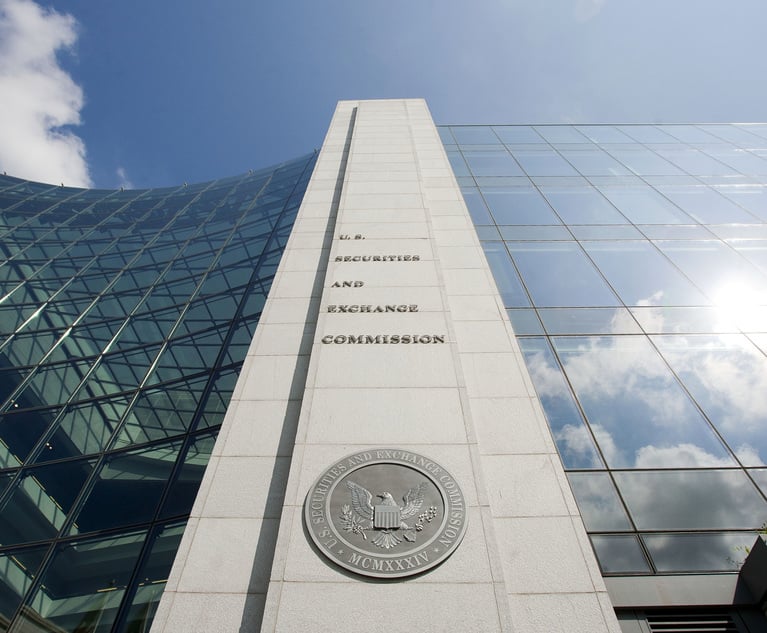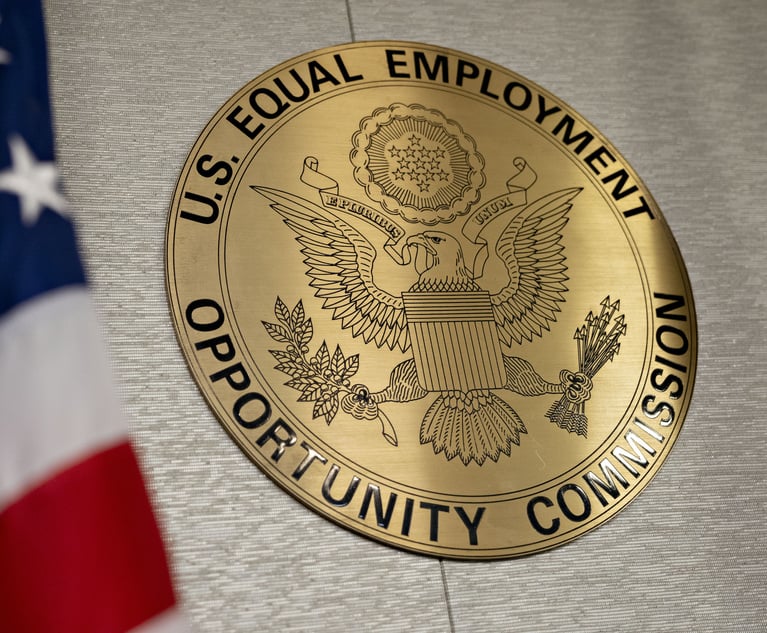Court Rules Affirmative Action Program Illegal
Todd Dean, a white man who unsuccessfully applied for employment with the fire department, sued Shreveport in 2000, alleging the department's hiring practices were racist.
March 31, 2006 at 07:00 PM
7 minute read
The City of Shreveport Fire Department is known for squelching blazes. But there was one fire that it just couldn't put out.
Todd Dean, a white man who unsuccessfully applied for employment with the fire department, sued Shreveport in 2000, alleging the department's hiring practices were racist. The litigation heated up after eight other white men joined Dean's suit.
In question was an exam the city used to test applicants. Test takers' results were divided into categories based on race and sex. Regardless of who scored highest overall, the department only took the top scorers in each category. Dean alleged he scored higher than some of the African-American applicants but was denied employment because of the quota.
The U.S. Court of Appeals for the Fifth Circuit agreed with the plaintiffs. The court found that the city's practices violated Louisiana's constitution and Title VII of the Civil Rights Act.
Experts agree that the case is representative of the increased scrutiny courts apply to affirmative action programs. Companies with such programs need to make regular assessments of their progress or risk liabilities.
“With affirmative action programs, you have to monitor whatever you are doing constantly to see whether you've reached your desired result and whether there is still a need to continue with the program,” says Jaime Ramon, a partner at Kirkpatrick & Lockhart Nicholson Graham in Dallas.
Minority Report
That is exactly what Shreveport failed to do for nearly 25 years.
The city's problems began in 1980 when it entered into a consent decree with the Department of Justice after the agency sued the city on allegations of discriminatory hiring practices against minorities and women. Although the decree didn't mandate any particular hiring practice, it did require the city to set long-term staffing goals.
The 5th Circuit has not yet ruled on the consent decree's constitutionality. Regardless, the court found that the way the city chose to comply with the decree was unconstitutional under the strict scrutiny standard, a standard not applied in 1980.
“In 1980, the standard for whether a consent decree was constitutional in the 5th Circuit was a rational basis test,” says Pam Jones, the attorney for the plaintiffs. “But that changed when the U.S. Supreme Court came out several years later and said you have to use the strict scrutiny standard.”
Similarly, the affirmative action program was not a violation of Title VII when Shreveport first implemented it because Title VII wasn't amended to make race-based hiring a violation until 1991. Yet throughout two decades, a shift in judicial scrutiny and amendments to the Civil Rights Act, the city continued its affirmative action program.
Affirmative Review
In its ruling, the court blasted the city for basically institutionalizing its affirmative action program when it should only have been a temporary remedy to past discriminatory practices. In addition, because the consent decree failed to narrowly define “qualified applicant,” the city had no realistic way of benchmarking its progress as to whether it had met the goals laid out by the decree.
“One of the main mistakes in the consent decree was that they never really defined what the appropriate labor pool is so you never get to decide the issue of who is in the labor pool to define availability and underutilization,” Ramon says.
With a narrowly tailored program, a system of continual evaluation and an eye on the ever-changing opinions of the courts, companies with affirmative action policies can avoid liability and thus a costly Title VII violation.
“All GCs should examine their company's policies on an occasional basis and ask themselves, 'How are we doing things, why are we doing them this way, and does it make sense?'” says Rogge Dunn, partner at Clouse Dunn Hirsch. “These programs are not designed to be permanent.”
The City of Shreveport Fire Department is known for squelching blazes. But there was one fire that it just couldn't put out.
Todd Dean, a white man who unsuccessfully applied for employment with the fire department, sued Shreveport in 2000, alleging the department's hiring practices were racist. The litigation heated up after eight other white men joined Dean's suit.
In question was an exam the city used to test applicants. Test takers' results were divided into categories based on race and sex. Regardless of who scored highest overall, the department only took the top scorers in each category. Dean alleged he scored higher than some of the African-American applicants but was denied employment because of the quota.
The U.S. Court of Appeals for the Fifth Circuit agreed with the plaintiffs. The court found that the city's practices violated Louisiana's constitution and Title VII of the Civil Rights Act.
Experts agree that the case is representative of the increased scrutiny courts apply to affirmative action programs. Companies with such programs need to make regular assessments of their progress or risk liabilities.
“With affirmative action programs, you have to monitor whatever you are doing constantly to see whether you've reached your desired result and whether there is still a need to continue with the program,” says Jaime Ramon, a partner at Kirkpatrick & Lockhart Nicholson Graham in Dallas.
Minority Report
That is exactly what Shreveport failed to do for nearly 25 years.
The city's problems began in 1980 when it entered into a consent decree with the Department of Justice after the agency sued the city on allegations of discriminatory hiring practices against minorities and women. Although the decree didn't mandate any particular hiring practice, it did require the city to set long-term staffing goals.
The 5th Circuit has not yet ruled on the consent decree's constitutionality. Regardless, the court found that the way the city chose to comply with the decree was unconstitutional under the strict scrutiny standard, a standard not applied in 1980.
“In 1980, the standard for whether a consent decree was constitutional in the 5th Circuit was a rational basis test,” says Pam Jones, the attorney for the plaintiffs. “But that changed when the U.S. Supreme Court came out several years later and said you have to use the strict scrutiny standard.”
Similarly, the affirmative action program was not a violation of Title VII when Shreveport first implemented it because Title VII wasn't amended to make race-based hiring a violation until 1991. Yet throughout two decades, a shift in judicial scrutiny and amendments to the Civil Rights Act, the city continued its affirmative action program.
Affirmative Review
In its ruling, the court blasted the city for basically institutionalizing its affirmative action program when it should only have been a temporary remedy to past discriminatory practices. In addition, because the consent decree failed to narrowly define “qualified applicant,” the city had no realistic way of benchmarking its progress as to whether it had met the goals laid out by the decree.
“One of the main mistakes in the consent decree was that they never really defined what the appropriate labor pool is so you never get to decide the issue of who is in the labor pool to define availability and underutilization,” Ramon says.
With a narrowly tailored program, a system of continual evaluation and an eye on the ever-changing opinions of the courts, companies with affirmative action policies can avoid liability and thus a costly Title VII violation.
“All GCs should examine their company's policies on an occasional basis and ask themselves, 'How are we doing things, why are we doing them this way, and does it make sense?'” says Rogge Dunn, partner at Clouse Dunn Hirsch. “These programs are not designed to be permanent.”
This content has been archived. It is available through our partners, LexisNexis® and Bloomberg Law.
To view this content, please continue to their sites.
Not a Lexis Subscriber?
Subscribe Now
Not a Bloomberg Law Subscriber?
Subscribe Now
NOT FOR REPRINT
© 2025 ALM Global, LLC, All Rights Reserved. Request academic re-use from www.copyright.com. All other uses, submit a request to [email protected]. For more information visit Asset & Logo Licensing.
You Might Like
View All

Trending Stories
- 1Munger, Gibson Dunn Billed $63 Million to Snap in 2024
- 2January Petitions Press High Court on Guns, Birth Certificate Sex Classifications
- 3'A Waste of Your Time': Practice Tips From Judges in the Oakland Federal Courthouse
- 4Judge Extends Tom Girardi's Time in Prison Medical Facility to Feb. 20
- 5Supreme Court Denies Trump's Request to Pause Pending Environmental Cases
Who Got The Work
J. Brugh Lower of Gibbons has entered an appearance for industrial equipment supplier Devco Corporation in a pending trademark infringement lawsuit. The suit, accusing the defendant of selling knock-off Graco products, was filed Dec. 18 in New Jersey District Court by Rivkin Radler on behalf of Graco Inc. and Graco Minnesota. The case, assigned to U.S. District Judge Zahid N. Quraishi, is 3:24-cv-11294, Graco Inc. et al v. Devco Corporation.
Who Got The Work
Rebecca Maller-Stein and Kent A. Yalowitz of Arnold & Porter Kaye Scholer have entered their appearances for Hanaco Venture Capital and its executives, Lior Prosor and David Frankel, in a pending securities lawsuit. The action, filed on Dec. 24 in New York Southern District Court by Zell, Aron & Co. on behalf of Goldeneye Advisors, accuses the defendants of negligently and fraudulently managing the plaintiff's $1 million investment. The case, assigned to U.S. District Judge Vernon S. Broderick, is 1:24-cv-09918, Goldeneye Advisors, LLC v. Hanaco Venture Capital, Ltd. et al.
Who Got The Work
Attorneys from A&O Shearman has stepped in as defense counsel for Toronto-Dominion Bank and other defendants in a pending securities class action. The suit, filed Dec. 11 in New York Southern District Court by Bleichmar Fonti & Auld, accuses the defendants of concealing the bank's 'pervasive' deficiencies in regards to its compliance with the Bank Secrecy Act and the quality of its anti-money laundering controls. The case, assigned to U.S. District Judge Arun Subramanian, is 1:24-cv-09445, Gonzalez v. The Toronto-Dominion Bank et al.
Who Got The Work
Crown Castle International, a Pennsylvania company providing shared communications infrastructure, has turned to Luke D. Wolf of Gordon Rees Scully Mansukhani to fend off a pending breach-of-contract lawsuit. The court action, filed Nov. 25 in Michigan Eastern District Court by Hooper Hathaway PC on behalf of The Town Residences LLC, accuses Crown Castle of failing to transfer approximately $30,000 in utility payments from T-Mobile in breach of a roof-top lease and assignment agreement. The case, assigned to U.S. District Judge Susan K. Declercq, is 2:24-cv-13131, The Town Residences LLC v. T-Mobile US, Inc. et al.
Who Got The Work
Wilfred P. Coronato and Daniel M. Schwartz of McCarter & English have stepped in as defense counsel to Electrolux Home Products Inc. in a pending product liability lawsuit. The court action, filed Nov. 26 in New York Eastern District Court by Poulos Lopiccolo PC and Nagel Rice LLP on behalf of David Stern, alleges that the defendant's refrigerators’ drawers and shelving repeatedly break and fall apart within months after purchase. The case, assigned to U.S. District Judge Joan M. Azrack, is 2:24-cv-08204, Stern v. Electrolux Home Products, Inc.
Featured Firms
Law Offices of Gary Martin Hays & Associates, P.C.
(470) 294-1674
Law Offices of Mark E. Salomone
(857) 444-6468
Smith & Hassler
(713) 739-1250







